
| Erasing Borders Festival of Indian Dance, Part 2 Outdoors – New York | |
| By Marina Harss on August 17, 2016 | |
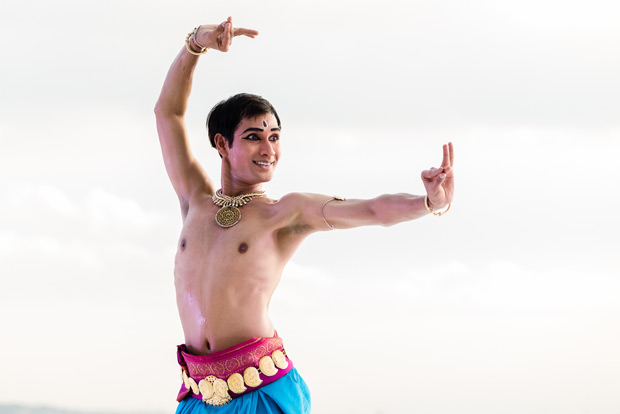 |
|
| Erasing Borders Festival of Indian Dance Part 2: Outdoors, at the Battery Dance Festival Featuring: Carolina Prada, Surabhi Bharadwaj, Sooraj Subramaniam, Avijit Das, PT Krishnan Mohan Mishra, Sumeet Nagdev Dance Arts, Battery Dance | |
Kuchipudi on the Hudson |
|
| The viewing conditions weren’t ideal at the outdoor portion of the Erasing Borders festival of Indian dance this year – sweltering heat, sun in your eyes – but then, it’s pointless to complain about atmospheric conditions at an outdoor summer festival. There were upsides to the experience: the glorious lapping of waves in New York Harbor just beyond the performance platform, the view of a smattering of people doing a ballet barre against the balustrade on the waterfront, and, late in the evening, the pink and gold light of an urban sunset. The festival, held on day two of the weeklong Battery Dance Festival – which happened to fall on Indian Independence Day – has become a yearly feature of the lazy late-summer calendar. This year, it included 2 parts, one indoors (August 13) and one outdoors (August 15.) I saw the latter. Each edition offers a new roundup of young and veteran performers in various styles. This year included kuchipudi, from Andhra Pradesh; mayurbhanj chhau, from the East; kathak, from the North; Odissi, from Odisha; bharatanatyam, from Tamil Nadu; and two modern-dance troupes. All but two of the performers of traditional Indian forms were from India, the exceptions were Sooraj Subramaniam, who works in Belgium, and the San Francisco-based Surabhi Bharadwaj. One performance included live music – the others all used recordings, inevitable in the circumstances. |
|
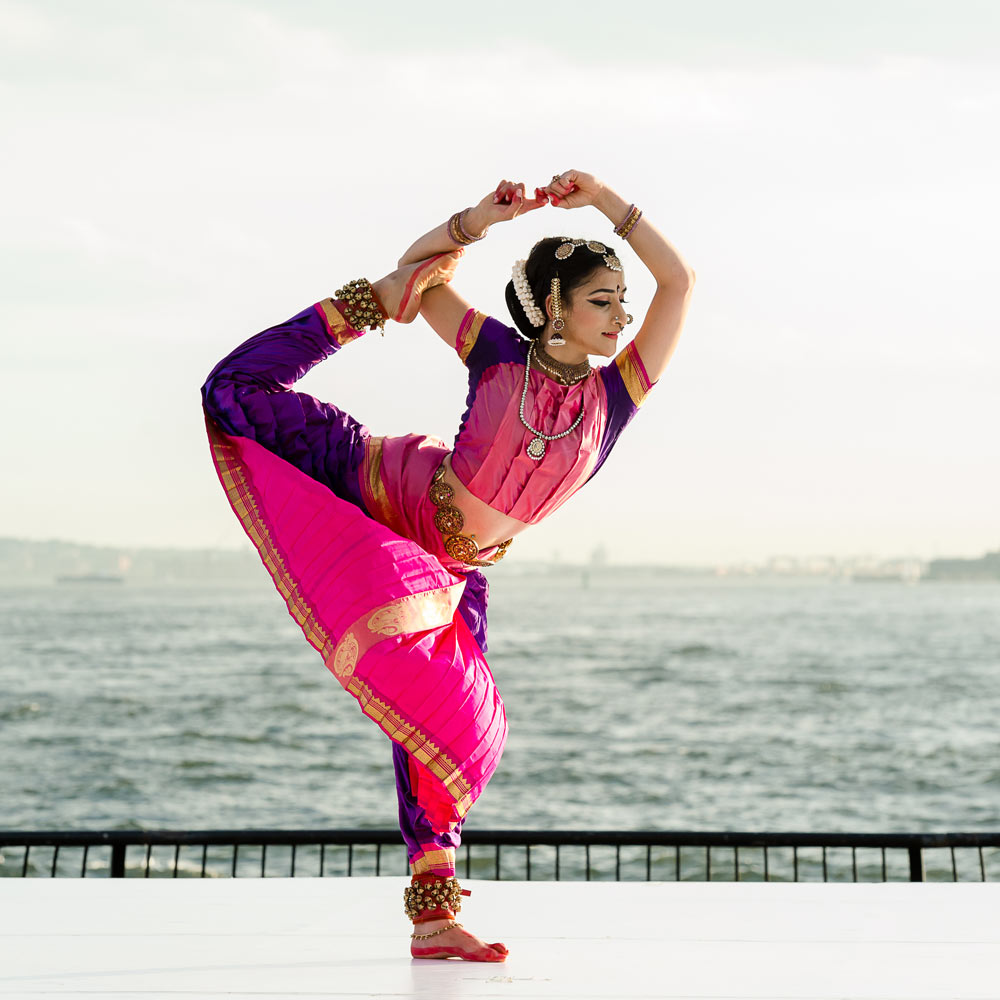 |
|
| Of course, an outdoor festival is not really the place to evaluate subtleties of structure or style; it’s all about big, overriding impressions. As always with Indian dance, the musicality – the way the dancers’ feet closely mirror the complex rhythms while their upper bodies reflect the melody – was the most immediately obvious feature. Musicality is one of the great pleasures of Indian dance – even greater when the music is played live. The performance by the kathak master PT Krishnan Mohan Mishra, accompanied by a small ensemble (including tabla and sitar), promised much in this respect. Kathak is perhaps the most musical of all the Indian dances, in the sense that the structure of music is its very subject. The dancer enters into a conversation, almost a duel, with the drummers; as in tap or flamenco, his (or her) feet become an instrument. Mishra performed an improvisation, in which the drummer (Narendra Budhokar) would tap out a long, complex rhythmic pattern, which he would then match or counter or embroider with his feet. He performed several variations including, comically, with his eyebrows. His virtuosity was impressive; he could double or triple the beats, or slow them down to raindrop speed, but also match the exact dynamics of the music. But the effect was dampened by the stop-and-go nature of the demonstration, made worse by certain technical blips. The amplification of the feet muffled the articulation of the taps; Mishra’s explanations were barely audible. |
|
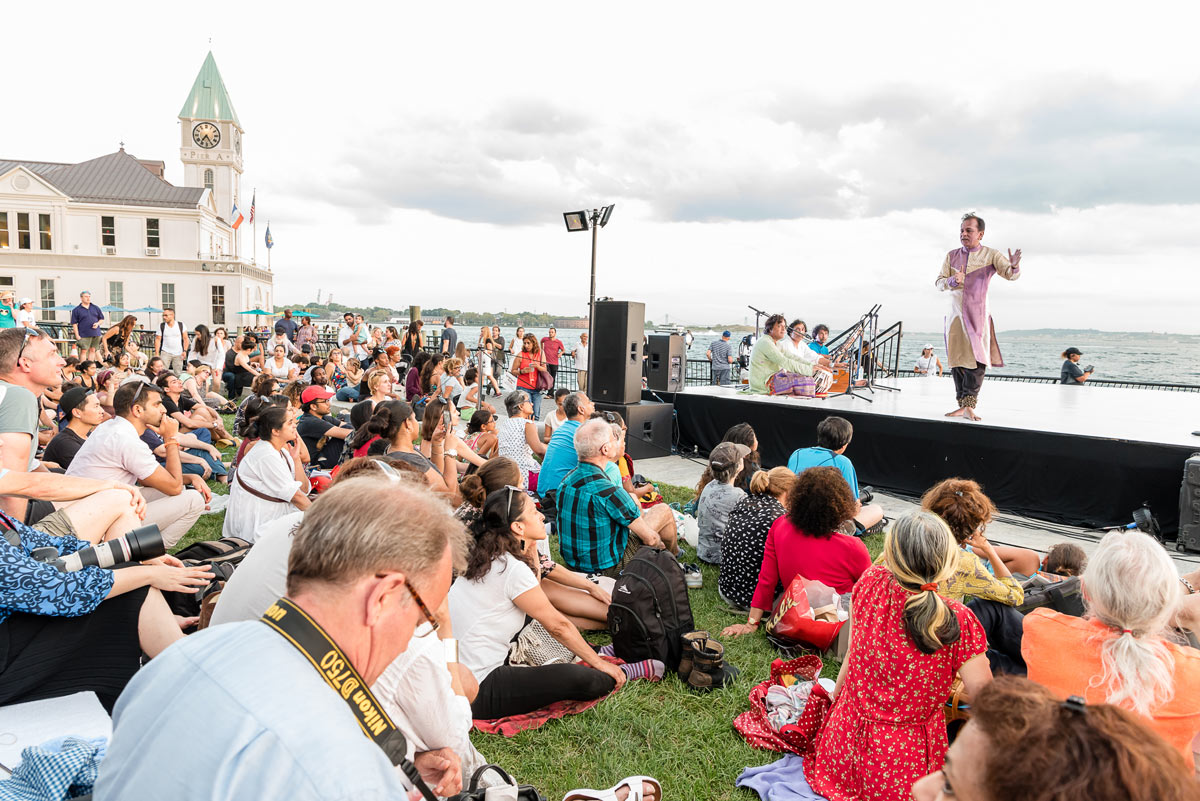 |
|
| Pandit Krishnan Mohan Mishra. © Darial Sneed. (Click image for larger version) |
|
| There was a noticeable trend toward acrobaticism, even in bharata natyam. Surabhi Bharadwaj peppered her solo, “Aadu Pambe,” with high kicks, knee rolls, and backbends, including one in which her head reached all the way down between her legs. Hers was the most acrobatic bharatanatyam solo I’ve ever seen, in fact. Though appropriate to the setting, the accumulation of feats of prowess made the dance look more like a virtuosic demonstration than an esthetic whole. The acrobatics seemed more suited to Carolina Prada’s “Ardhanarishwar,” a piece in the mayurbhanj chhau, a style usually performed by men. Chhau, rarely seen here, combines athletic feats with warrior like poses and martial arts techniques, set to wonderfully booming and syncopated rhythms. The subjects of the dances are Hindu epics, and there’s something almost giant-like about the way the dancers move. The steps are rocking and big, punctuated by shakes of the shoulders and hips; the pace is generally slow and epic. The dancer takes up space and impresses us with her – usually his – power, launching into space devouring leaps and barrel jumps and difficult poses in which the upper body sways while balancing on one leg. Prada, reportedly the only woman working in the genre, studied with the same guru (Janmejoy Sai Babu) who trained Rakesh Sai Babu, who performed at the festival last year. She was impressively masculine, while Babu had an almost feminine softness. |
|
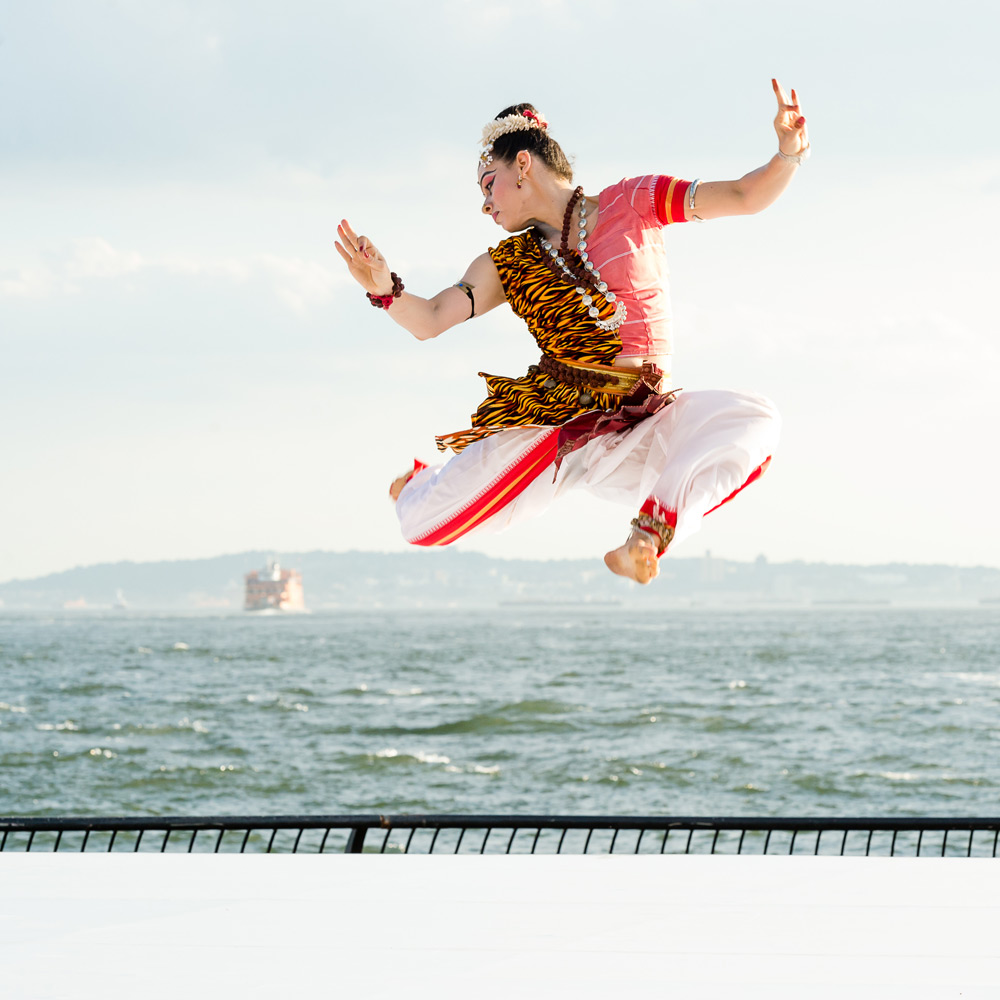 |
|
| Carolina Prada. © Darial Sneed. (Click image for larger version) |
|
| The bending of gender stereotypes seems to be a trend in Indian dance right now, and an interesting one. Sooraj Subramaniam, the Gent-based dancer, performed a solo in the odissi style, usually associated with female dancers. Dancing bare-chested, he was able to show all the more clearly the curves and swaying of the torso which make this such a beguiling and lilting form. His arm movements are extremely precise and elegant. It comes as no surprise, then, to see that he is also a serious student of ballet. Like flamenco dancers, Indian classical dancers are branching out into other techniques to refine their form. But the highlight, at least for me, was the performance by Avijit Das, a kuchipudi dancer from Bangalore. Das dances with a striking subtlety and crispness, a characteristic he shares with another kuchipudi dancer, Shantala Shivalingappa. Both were students of Vempati Chinna Satyam, a great innovator of the form. Perhaps these are elements of his school of kuchipudi. A slight, almost godlike smile illuminated Das’s face. His expression was open and bright, communicative but not ingratiating. His jumps were light and sharp, almost weightless. Das danced a tarangam, which included the traditional rhythmic gliding on a brass plate. It’s a trick move – look how I can cover ground on this plate without showing any effort in my upper body! – but whenever he or Shivalingappa do it, it acquires an ineffable grace. |
|
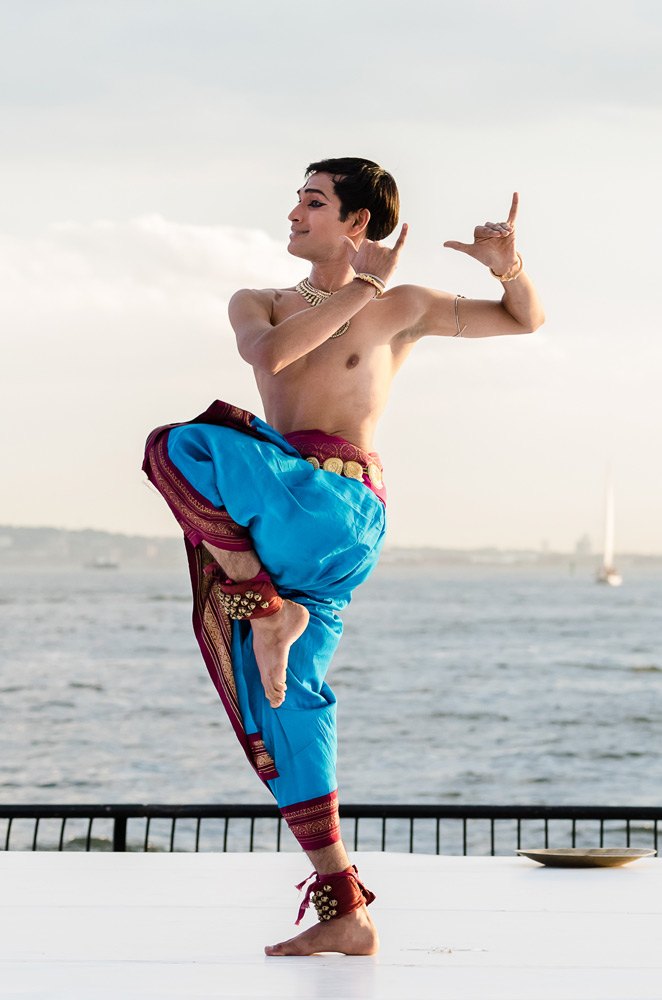 |
|
| Two modern-dance pieces tinged with Indian motifs closed the show: Sumeet Nagdev Dance Arts’ “Dhrut” and Battery Dance’s “The Durga Project.” Both were sincere attempts to combine elements of Indian dance (the hands, the poses, the rhythmic footwork) with ballet and modern-dance techniques. Both used electronic music, the latter more space-agey. Neither was particularly effective, though “Durga Project” was better performed. It’s not easy to combine a form as complex and specific as Indian classical dance – which is already a multiplicity of things – with something as alien and specific as ballet. But people will keep trying. | |
| URL: http://dancetabs.com/2016/08/erasing-borders-festival-of-indian-dance-part-2-outdoors-new-york/ |